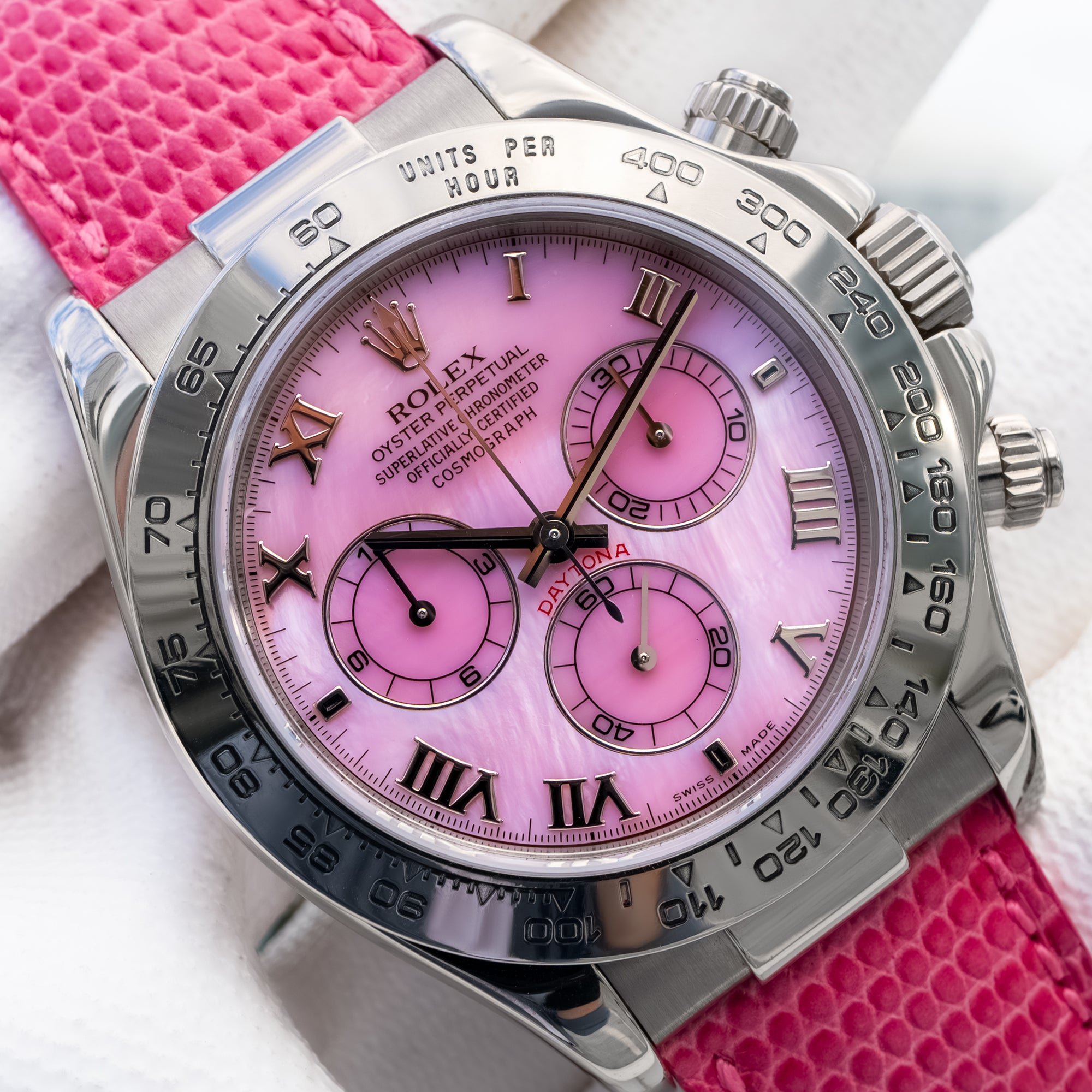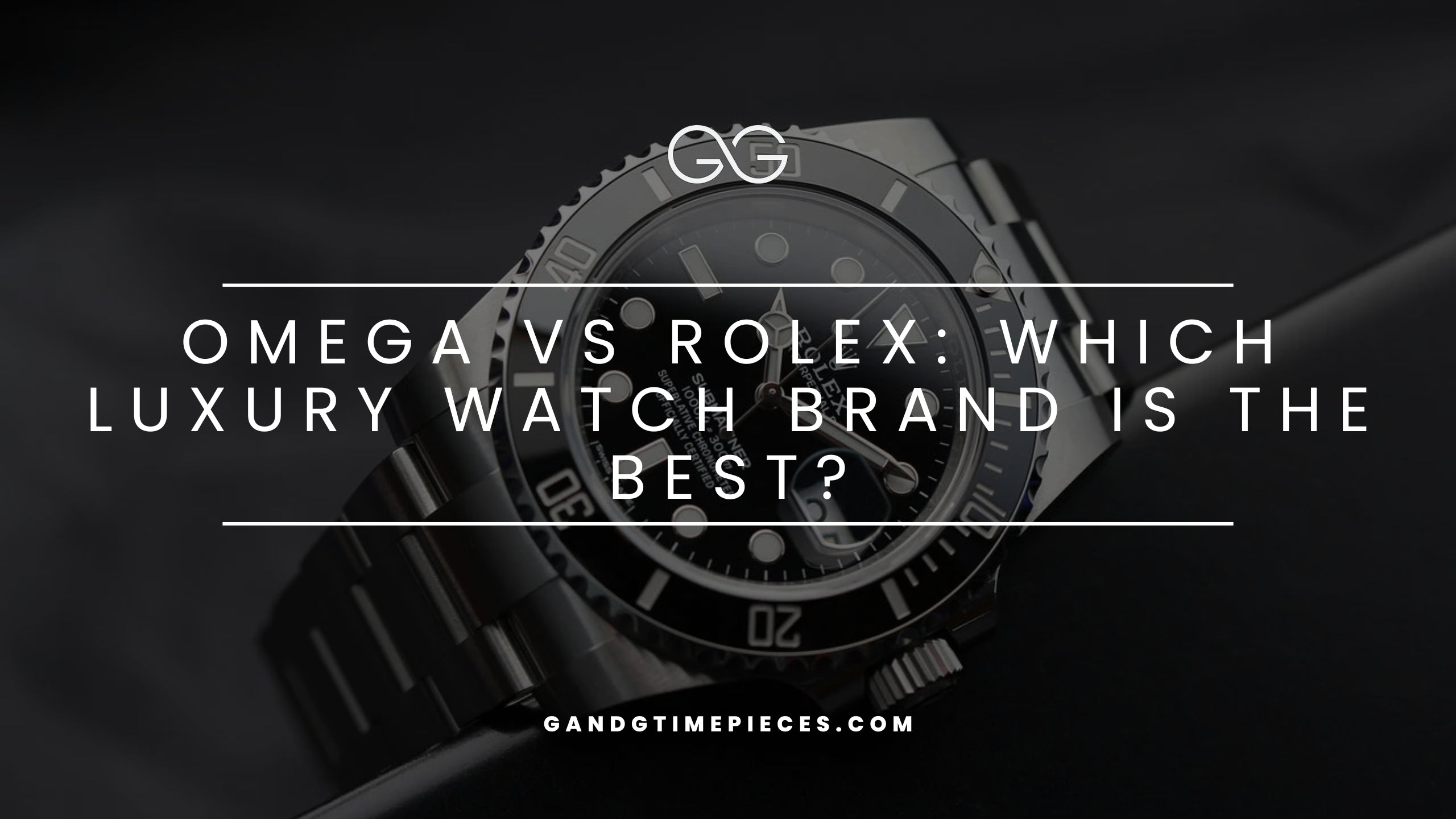Everyone and their grandmother have heard of Rolex. You can go anywhere across the globe, from a small town in Europe or Africa to a village retreat in Vietnam, across the Middle East, to the shores of Australia and the busy city streets of the US, and people will recognize this legendary watch brand on your wrist.
Its prestige and recognition have made it the number-one status symbol and an excellent investment piece, but the prices have been creeping up over the years.
On the other hand, its sister brand, Tudor, has always been positioned as a more affordable alternative, a foray into the world of luxury watches for those new to the hobby or those in need of a special gift to mark a big occasion.
So, which one should you choose? Well, to answer that question, we'll have to look at the history of these two brands and do a head-to-head comparison of their features, craftsmanship, model ranges, and more.
The History and Legacy of Tudor and Rolex
Rolex has been the big name on everyone's lips for decades, but Tudor has gotten a lot of attention from watch enthusiasts and casual shoppers alike in recent years thanks to its stunning Black Bay and Pelagos ranges.
Naturally, there is a big debate raging online, with one camp advising people to go for Tudor, as they get comparable build quality and save thousands of dollars, while the other camp touts the exclusivity and superior materials of Rolex models.
Before we move on to the technical side of things, though, let's take a look at where it all started and how these brands evolved into what they are now.
Rolex: The Quintessential Luxury Watch
Built on innovation, Rolex was founded way back in 1905 by a young, forward-thinking entrepreneur with a clear vision, Hans Wilsdorf. The man saw great potential in the then-still-new wristwatch market and, by 1914, was already making highly precise and officially certified pieces.
By 1922 he had made the first Submariner, a cutting-edge submersible watch with a second exterior case to seal the mechanism and protect it from moisture and dust during rugged activity. That's when the company's vision slowly took shape – robust yet highly precise tool watches alongside the more refined precious metal offers.
Soon followed the first Oyster case, as featured in the Rolex Oyster Perpetual models, which swam across the English Channel on the wrists of the first female to accomplish this daring feat, never skipping a beat.
Several decades and a few patents later, the granddaddy of the modern Submariner graced the wrist of none other than Shaun Connery in the first ever James Bond movie, although Ian Fleming himself preferred the Rolex Explorer.
With such legendary and timeless designs as the Submariner, GMT Master II Pepsi, and the Daytona chronograph, Rolex later cemented its position as one of the top luxury watch brands. It's always on the radar of watch nerds, sophisticated gentlemen, presidents, adventurers, investors, and flashy movie stars alike.
Tudor: The Affordable Alternative
Built by the same brilliant mind behind Rolex, the Tudor watch company was envisioned as a less expensive but still well-crafted option for those who could not afford the more luxurious pieces developed by his first company. Initially, these watches featured ready-made movements, like the various ETA models, placed in Rolex cases and equipped with their bracelets.
The main selling point was that you get durability and precision engineering that make the watches tough, waterproof, and well-protected but with more modest off-the-shelf movements to save money but still get a high-quality product. They have since started making in-house movements that are praised for their quality and durability.
Over the years, the Tudor brand has had several military clients, most notably the French and US Navy forces, who were equipped with their dive watches like the Tudor Submariner throughout the 60s, 70s, and 80s. In fact, there are still plenty of Tudor models with the names of military units printed on the dials or engraved on the case back, as these are quite popular in the special forces community.
Their modern ranges, like the Black Bay GMT and the Pelagos, have become quite popular, being worn by people from all walks of life. Their distinct snowflake hands, bold militaristic design features, and unique innovations, like the T-fit clasp, separate them from the classic Rolex Submariner and have allowed Tudor to hold its own in the watch market by creating a distinct identity and massive following.
Craftsmanship and Movements
Now that we have some appreciation for the long and storied history of both companies, we can dive into all the little details that will help you decide which brand would be a better fit for you. We'll start off with the very heart of any watch – the movement – and get a general feel of the overall craftsmanship.
Rolex Movements: Precision and Durability
There's no beating Rolex when it comes down to pure precision, as the accuracy of their movements goes even beyond the deviation of -4 to +6 seconds over 24 hours needed to gain a COSC certification, with the brand stating -2 to +2 seconds per day.
Their in-house movements, like the Caliber 3186 in the GMT Master II and the 3230, or its date variant, the 3235, in the Submariner models, have shown exceptional durability, maintaining good accuracy for years without any service. The brand also forges the 904L steel for its cases in-house, which is significantly harder than the industry-standard 316L.
Tudor Movements: Modern Innovation at Half the Price
Long gone are the days of readily available and cheaper ETA movements, as Tudor now produces their own calibers in-house. They have just a tad looser tolerances than Rolex calibers, but they are just under the COSC standards, with Tudor movements being regulated for -2 to +4 seconds per day, which also meets the new METAS Master Chronometer Standard.
The caliber MT5612 in the Tudor Black Bay and Pelagos and the MT5652 in the GMT version are as rugged as their Rolex counterparts, and the extra couple of seconds of deviation per day are not enough for anyone to really notice the difference, let alone to affect their experience.
All in all, the accuracy of the movements and the overall craftsmanship rival that of Rolex, and for about half the price, a lot of people will turn a blind eye to three or four extra seconds of deviation or a slightly softer steel.
Features and Innovation
Now, we can look at the defining features offered on the most popular models of both brands and see what kind of innovative designs you can expect.
Rolex: Cutting-Edge Design
In recent years Rolex has played with the latest tech, including silicone balance springs or the use of Parachrome Blue hairspring and a soft iron Faraday cage to protect the movement in the Milgaus from strong magnetic fields.
The water resistance Rolex provides is also incredible, with the Sea-Dweller able to survive down to 4000 ft below sea level and the Deepsea model pushing that even further to an astonishing 12,800 ft.
Of course, there are also beautifully designed and comfortable bracelets like the legendary jubilee and presidential styles and the glide lock clasps for quick size adjustments without any tools.
Tudor: Rugged and Reliable
Tudor cases are more toned down, using mostly 316L steel or Titanium, which goes along with the military aesthetic of some of the models, and there are fewer options if you are looking for something with precious metals for a bit of extra flair.
However, you could take a Pelagos down to 1640 ft in the ocean if you were really curious about what was down there, and it would work just as fine as if it was sitting on your dresser. The T-fit clasp is a good example of innovation, and the company has been using titanium for extra light yet highly durable models, and even bronze.
Coupled with their reliable movements and clean design, it makes for a rugged yet good-looking package.
Comparing Key Models: Tudor vs Rolex
We've explored what makes them tick, but a watch is more than just the tiny gears, jewels, and a mainspring – it's an experience. So, how do the most popular models from Tudor and Rolex stack up? Let's find out.
Dive Watches
-
Rolex Submariner: The quintessential diver with a design that has been copied countless times, its nearly indestructible construction and high demand make this a go-to investment piece.
-
Tudor Pelagos: A hard-as-nails watch with a greater depth rating than the Submariner and all the build quality at a fraction of the price.
GMT Watches
-
GMT Master II Pepsi: A favorite among collectors and rich and powerful world travelers, with a rich history and tie-ins with Pan Am, it has adorned the wrists of legends like Pablo Picasso and Marlon Brando.
-
Tudor Black Bay GMT: A true gem for any watch geek who appreciates the vintage-inspired design and wants something robust yet elegant but doesn't want to break the bank.
Vintage-Inspired Watches
-
Rolex Daytona: A legend and a bit of an underdog that wasn't all that popular during the first couple of decades of its run but later exploded with lots of super-luxurious variants worth tens of thousands and even vintage pieces like Paul Newman's Rolex Daytona going for millions.
-
Tudor Heritage Chrono: A modern take on the classic Tudor chronographs that evokes a sense of nostalgia in old-timers and inspires dreams of adventure in the younger watch-lovers who appreciate the historical significance of such pieces.
Brand Prestige and Target Audience
With luxury watches, it's all about the prestige of owning something highly refined that is a cut above the rest. Here's how each brand positions itself and who its products are aimed at.
Rolex: A Status Symbol
The Rolex brand is seen as the ultimate status symbol and, even more than that, a physical manifestation of success. That's why so many people have one of the iconic models like the Day-Date or Submariner on their bucket list and why people get a Rolex to celebrate a promotion or a big break for their business.
Tudor: Accessible Luxury
The target audience here is slightly different, although with some slight overlap, as many Rolex collectors will have a Black Bay 58 on when engaging in activities, they would be afraid to do with a much more expensive piece.
That's the beauty of Tudor – a premium feel in a rugged package that just keeps on going whatever you throw at it. It really is geared more towards true enthusiasts and those who love the retro-inspired look.
Price and Resale Value
Here, it's not just about the price but the value you get for what you pay and how well certain watches hold their value if you decide to sell them and get something different in the future.
Rolex: Exclusivity with High Resale Value
You'll find it impossible to just go out and get a Rolex Daytona or Submariner in a Rolex store. There are waiting lists, especially for the rarer models in precious metals featuring diamonds or gemstones, and the prices on the secondary market are usually a lot higher than the MSRP.
Almost anything from the entire catalog will hold its value for years, while select models tend to appreciate in value over time.
Tudor: Entry-Level Luxury with Growing Value
While it's far from being merely a "poor man's Rolex," it does come with 50% less strain on your wallet, but you still get the exceptional build quality and tight tolerances you get with Rolex watches.
The unique designs and strong heritage have also drawn people to models like the Tudor Ranger and the Black Bay family, so the brand has been making waves in the luxury watch industry. All that means that the various popular models hold their prices fairly well and there is always a market for them.
The Final Choice Between Tudor and Rolex
In essence, you could say that Rolex has played the long game in an effort to position itself higher among the echelons of the luxury watch world, often being cited as one of the "Big Four," alongside Patek Phillipe, Audemars Piquet, and Richard Mille.
It features exclusive pieces that are not only more expensive but often hard to come by and have incredible resale value and brand recognition, making Rolex watches a widely recognized status symbol and a smart investment.
Tudor, on the other hand, has also gone a long way since its beginnings as a humble sister brand to Rolex with ETA movements. It leans into its military pedigree and the slightly more tool-watch and vintage esthetic but still has plenty of more refined options at more affordable price points.
All that makes Tudor the coveted Grail watch of many enthusiasts and a great gift to mark special occasions or a unit watch that a lot more people can save up for.
Whichever you end up choosing, be sure to take a look at all the latest Tudor and Rolex models right here at G&G Timepieces. Are you leaning more towards the Tudor Black Bay GMT, a super hot item right now, or are you more of a classic gent that prefers the timeless Rolex Submariner? Either way, we have plenty of luxury watch options to suit any style and occasion.





